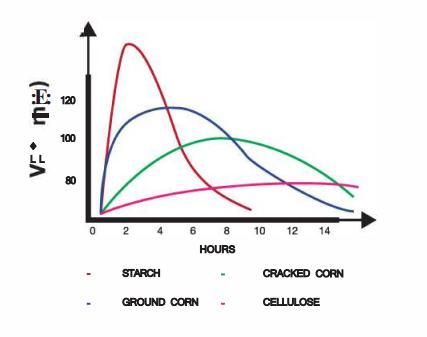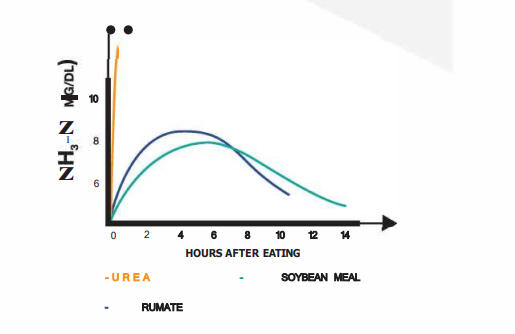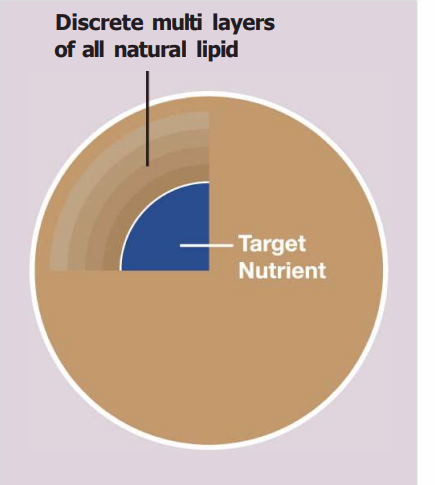Knowde Enhanced TDS
Identification & Functionality
- Animal Feed & Nutrition Functions
- Technologies
- Product Information
Content - Min of 87% urea (average 89%), minimum 250% (average 256% - 41%N) crude protein equivalent as non-protein nitrogen.
Features & Benefits
- Animal Feed & Nutrition Features
- Benefits
Improvement in Digestible Protein Rumate:
- Replaces low-quality proteins with the targeted release of nitrogen that combines with available sugar and carbohydrate in the rumen to improve the quality and volume of microbial protein production.
Improvement in Fiber Digestion and Dry Matter Utilization:
- Microbial mass and activity is increased providing the amounts of available carbohydrate and nitrogen in balance to ensure greater utilization of the dry matter, fiber digestion, and production of volatile fatty acids.
Optimizing Space in the Diet Rumate:
- Creates the opportunity to replace other less concentrated sources of protein allowing up to 1.0 kg of dry matter space in the diet to be taken by the addition of extra forage, non-fiber carbohydrate or other key ration ingredients to improve milk production and milk quality.
Lower Cost of Feed Rumate:
- Allows the reduction and replacement of high cost protein sources leading to lower overall feeding costs.
Applications & Uses
- Markets
- Applications
Feed to dairy or beef cattle.
- General Feeding Recommendations
- Vegetable proteins provide peptides and amino acids and have shown to stimulate microbial protein production.
- All vegetable protein should not be replaced with rumate.
- When using rumate together with standard urea the combined amount of rumate plus urea should not exceed 225g/cow/day.
- The soluble protein of the diet should be between 32% and 38% of total crude protein.
- When other protein sources are replaced by rumate ensure that high-quality ingredients are used to take up the space created in the diet such as a combination of:
- Forage
- High starch concentrates (e.g:, wheat, barley, maize meal)
- High sugar concentrates (e.g., molasses)
- High fermentable fiber concentrates (e.g., citrus, soya hulls, beet pulp)
- Fat
Regulatory & Compliance
- Recommended Inclusion Rates
- Maximum - 250g/cow/day
- Minimum effective rate - 10g/cow/day
- Beef - 50g-200g
- The inclusion of feed urea ina ruminant diet should be formulated by a nutritionist.
Technical Details & Test Data
- How Rumate Works in the Rumen
- The function of the rumen is influenced by a variety of factors but improvement in the efficiency and output of the microbial protein and energy can have a significant impact on reducing feed cost and increase profitability of milk production.
- The Targeted Release Nitrogen in Rumate can play a significant role in this.
- The rumen is extremely efficient at converting high fiber feed, low density protein and non-protein nitrogen into valuable nutrients for the ruminant.
- The volatile fatty acids from carbohydrate fermentation contribute about 70% of the ruminants energy needs and the microbial protein contributes between half and two thirds of the amino acids absorbed by the ruminants which have an almost ideal amino acid profile to that required for milk or meat production.

- To optimize the output of the rumen it is essential to have an efficient balance of available nitrogen and carbohydrate to boost the population of rumen microbes.
- Nitrogen release from common protein sources like soya bean meal tends to be relatively slow.
- The addition of urea to the diets can give fast release of nitrogen over a very short period but does not match the period over which the carbohydrates are available and therefore the impact is limited.
- A targeted release of nitrogen from Rumate over a set period allows for improvements in rumen fermentation leading to improved milk production and milk quality.
- Sources of energy and protein are digested at different rates, as can be seen in the figures below.

Why Feed Rumate Instead of Feed Grade Urea:
- Feed grade urea has no coating and is almost instantly soluble in the rumen.
- Because there is significant urease (Enzyme that hydrolyzes urea to ammonia) in the rumen, the addition of urea to diets can lead to rapid spikes in rumen ammonia nitrogen levels.
- Rumen bacteria are responsible for capturing the nitrogen for conversion to high quality microbial protein but when ammonia levels become too high and too fast the excess ammonia is absorbed into the bloodstream.
- The liver must then detoxify the ammonia by converting it back to urea which uses up energy that could be used for milk production.
- Some of the urea may recycle back to the rumen, however a significant amount of it is excreted in milk, as milk urea nitrogen, or in the urine.

In Summary Rumate Vs Urea:
- Rumate closely matches the nitrogen supply to microbial needs to maximize the efficiency of nitrogen utilization.
- Rumate allows a higher concentration of NPN to be fed safely
Safety & Health
- Caution
- Do not feed to ruminant animals under 3 months of age.
- Do not feed to non-ruminant animals.
Packaging & Availability
- Packaging Type
- Packaging
20kg bags.

